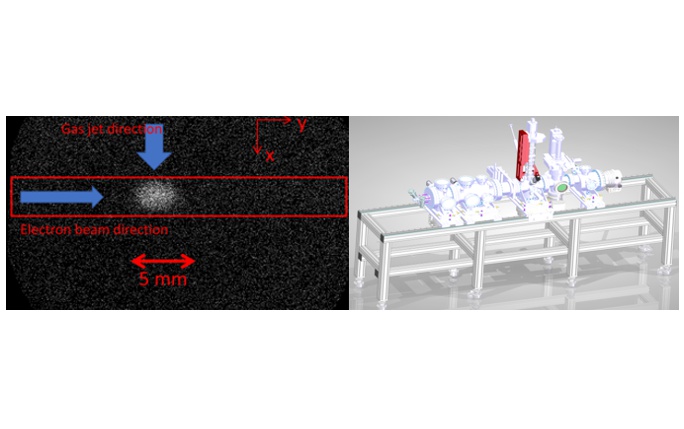Non-invasive beam profile monitor for medical accelerators

The Quasar Group has been developing over the years a very successful program of non-invasive beam profile monitors based on a supersonic gas jet. Originally developed for the ultra-low energy electrostatic storage ring at the Facility for Low-energy Antiproton and Ion Research (FLAIR) in Darmstadt (Germany), it is currently being adapted for transverse profile diagnostics of electron and proton beams in the High Luminosity LHC.
A team of scientists led by members of the Quasar Group at the Cockcroft Institute, together with colleagues at CERN and GSI (Germany) is now investigating the suitability of the gas-jet monitor for medical accelerators.
The monitor at HL-LHC uses a thin supersonic gas curtain that crosses the primary beam to be characterized under an angle of 45 degrees. Based on Beam Induced Fluorescence (BIF), the light caused by the interaction between the beam and gas-curtain is detected using a specially designed imaging system to determine the transverse profile of the particle beam. Another prototype working on the principle of beam induced ionization, commonly known as ionization profile monitor (IPM), is installed at The Cockcroft Institute.
Such a non-invasive online beam profile monitor would be highly desirable also for medical LINAC’s and storage rings as it can characterize the beam without stopping machine operation.
In a paper recently published in the European Journal of Medical Physics – Physica Medica, the team has presented the design features of both monitors, the gas-jet curtain formation and various experimental tests, including profile measurements of an electron beam, using different gases. It also discusses opportunities for simplifying the monitor design for integration into a medical accelerator and expected monitor performance.
The authors demonstrated that both devices can be used as viable profile monitors. Nitrogen and neon have been investigated as working gases for the BIF based gas jet monitor. While nitrogen offers a better signal to noise ratio given the same integration time is used, its strong fluorescence is due to ionized molecules, which may be strongly affected by electromagnetic fields during their movement in the time between excitation and emission, thus resulting in distorted profiles.

Image produced by beam-induced fluorescence of a gas curtain (left). Schematic of the beam-induced fluorescence based a gas jet profile monitor (right).
The development of quantum gas jets for IPM based monitors and optimization of the jet density for BIF based ones are currently ongoing. These new designs will make this kind of monitors useful for an even wide range of accelerators.
The article is part of a special issue of the European Journal of Medical Physics edited on occasion of the International Conference on Medical Accelerators, organised by the OMA network in Seville (Spain) in September 2019.
The full article can be found here: https://doi.org/10.1016/j.ejmp.2020.04.023